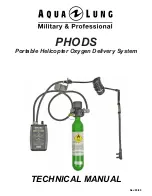
SDA Operator’s Manual
SDA-OM-E Rev H
185
The instrument's constant phase FIR (Finite Impulse Response) filters provide fast computation,
excellent step response in 0.5 bit steps, and minimum bandwidth reduction for resolution
improvements of between 0.5 and 3 bits. Each step corresponds to a bandwidth reduction factor
of two, allowing easy control of the bandwidth resolution trade-off. The parameters of the six
filters are given in the following table.
Resolution increased by
-3 dB Bandwidth (× Nyquist)
Filter Length (Samples)
0.5 0.5 2
1.0 0.241 5
1.5 0.121 10
2.0 0.058 24
2.5 0.029 51
3.0 0.016 117
With low-pass filters, the actual SNR increase obtained in any particular situation depends on the
power spectral density of the noise on the signal.
The improvement in SNR corresponds to the improvement in resolution if the noise in the signal
is white - evenly distributed across the frequency spectrum.
If the noise power is biased towards high frequencies, the SNR improvement will be better than
the resolution improvement.
The opposite may be true if the noise is mostly at lower frequencies. SNR improvement due to
the removal of coherent noise signals - feed-through of clock signals, for example - is determined
by the fall of the dominant frequency components of the signal in the passband. This is easily
ascertained using spectral analysis. The filters have a precisely constant zero-phase response.
This has two benefits. First, the filters do not distort the relative position of different events in the
waveform, even if the events' frequency content is different. Second, because the waveforms are
stored, the delay normally associated with filtering (between the input and output waveforms) can
be exactly compensated during the computation of the filtered waveform.
The filters have been given exact unity gain at low frequency. Enhanced resolution should
therefore not cause overflow if the source data is not overflowed. If part of the source trace were
to overflow, filtering would be allowed, but the results in the vicinity of the overflowed data - the
filter impulse response length - would be incorrect. This is because in some circumstances an
overflow may be a spike of only one or two samples, and the energy in this spike may not be
enough to significantly affect the results. It would then be undesirable to disallow the whole trace.
The following examples illustrate how you might use the instrument's enhanced resolution
function.
Содержание SDA
Страница 1: ...SERIAL DATA ANALYZER OPERATOR S MANUAL December 2007 ...
Страница 148: ...Standard Horizontal Parameter Help Markers Standard Vertical Parameter Help Markers 148 SDA OM E Rev H ...
Страница 223: ...SDA Operator s Manual Example 6 SDA OM E Rev H 223 ...
Страница 225: ...SDA Operator s Manual SDA OM E Rev H 225 ...
Страница 232: ...In this figure the panel has been pasted onto the Excel sheet for comparison 232 SDA OM E Rev H ...
Страница 243: ...SDA Operator s Manual This example used the CORREL Array1 Array2 function of Excel as depicted below SDA OM E Rev H 243 ...
Страница 246: ...246 SDA OM E Rev H ...
Страница 247: ...SDA Operator s Manual Excel Example 5 Using a Surface Plot SDA OM E Rev H 247 ...
Страница 279: ...SDA Operator s Manual Convolving two signals SDA OM E Rev H 279 ...
Страница 310: ...The jitter wizard is accessed from the Analysis drop down menu 310 SDA OM E Rev H ...
Страница 327: ...SDA Operator s Manual SDA OM E Rev H 327 ...
Страница 328: ...328 SDA OM E Rev H ...
Страница 394: ...394 SDA OM E Rev H ...
Страница 395: ...SDA Operator s Manual SDA OM E Rev H 395 ...
















































